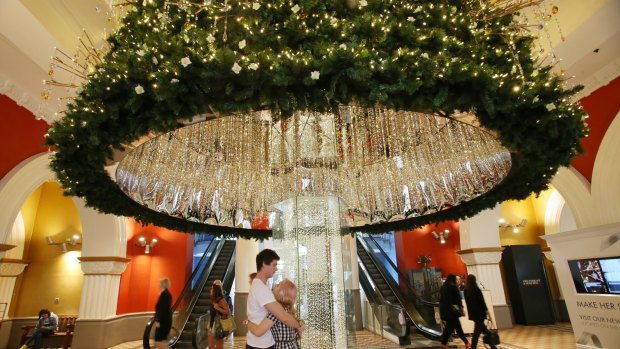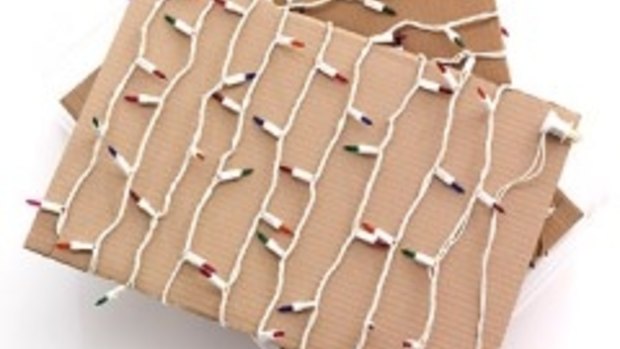By Lucy Cormack
It is almost that time again to deck the halls with boughs of holly and Christmas lights - that is, if you can untangle them.
No, it is not just you, your Christmas lights really do come out of the box each year in a knotted mess, even if they went in neatly folded 12 months before.
It can be such a hellish task that this year British supermarket chain Tesco has advertised for an "enthusiastic" person to detangle Christmas lights for customers this season.
The phenomenon was explored in 2007 when two University of California, San Diego researchers published the first physical explanation of how and why jostled string tends to become knotted.

There is no tangle too tough for this Paddington terrace house, which features more than 2500 individual lights.Credit: Dominic Lorrimer
Douglas Smith, a professor of Physics at the university, and Dorian Raymer, at the time a Physics undergraduate, discussed their findings in a report published in the Proceedings of the National Academy of Science, titled Spontaneous Knotting of an Agitated String.
Their experiment, conducted 3415 times, involved a string (about the width of a computer mouse cable) being placed in a cubic box, which was rotated at constant angular velocity, causing the string to tumble.
"We investigated the probability of knotting, the type of knots formed, and the dependence on string length. Before tumbling, the string was held vertically above the centre of the box and dropped in, creating a quasi random initial conformation," the report said.
"After tumbling, the box was opened and the ends of the string were lifted directly upward and joined to form a closed loop. A digital photo was taken whenever a complex knot was formed."

The Queen Victoria Building's Swarovski Christmas tree, which houses 65,150 lights and 82,000 crystals.Credit: Louise Kennerley
The pair found that a number of conditions had to occur before a knot formed.
First, a minimum length of 18.124 inches (46.03cm) was required of the piece of string. After that, there had to be a certain amount of movement, as there was likely not enough space for the ends of the string to become tangled if there was too much string packed into the box. It will also require a certain amount of flexibility, the more malleable, the easier it is for a knot to form.
The experiment resulted in a variety of knot types, with some producing up to 11 crossings.

One solution to the great Christmas light tangle.Credit: Martha Stewart
Smith and Raymer's principal finding was, the longer the piece of string, the more likely it will form a knot.
After determining a number of the physical principles of knot formation, the pair created a computer model which predicted the same results as those of the box experiment.
Their model found that confinement in a box will cause string to loop into concentric coils, and therefore, tangle. As they move, the ends of the string will move up and over the coils at random, resulting in a 50 per cent chance of intersecting any coil.
When it comes to untangling your twinkling Christmas lights, Colin Adams, professor of mathematics and statistics at Williams College, Massachusetts, and author of The Knot Book: An Elementary Introduction to the Mathematical Theory of Knots has some advice.
"Even if tempted, do not attempt to untangle the lights from the centre of the knotted mass: this method has little chance of working," Professor Adams told Joshua Pevin, author of the Worst Case Scenario Survival Handbook: Holidays.
"A theorem proved by H. Schubert in 1953 says that there are no inverses for knots," Prof Adams said, adding that even when the tangle appears to be worsening, "if the knot-free section is lengthening you will ultimately succeed."
But if you want to avoid dealing with knotted masses all together, ultimate homemaker Martha Stewart has one way to beat the tangle: using flat cardboard sheets, cut slits down the sides of the cardboard and wrap the lights around it, slipping the ends of the wire through the slits.